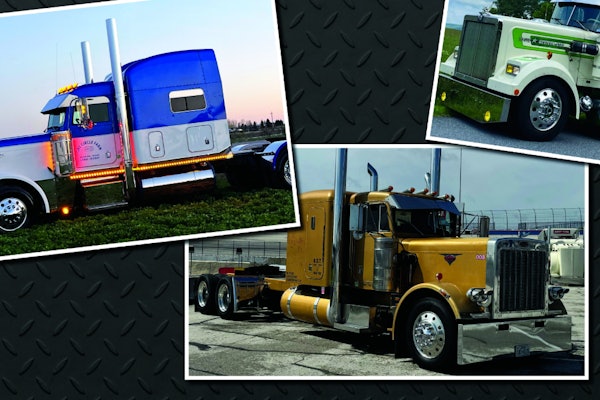By Randy Grider
Editor
[email protected]
David May knows something about the challenges of being self-taught. Through trial and error, the West Seneca, N.Y., resident taught himself how to drive a truck following a stint in the Army.
Now, nearly three decades later, he has reached the pinnacle of trucking success with selection as a captain of the American Trucking Associations’ 2005-2006 America’s Road Team, three state truck driving championships and 1.4 million accident-free miles under his belt.
While May has an “old-school” background, his trucking philosophy is progressive. “No one today should learn to drive the way I did,” he says.
In April, the LTL driver for Con-way Freight-Central was one of four professional drivers and the lead speaker on the Federal Motor Carrier Safety Administration Commercial Driver’s License Advisory Committee. In his remarks before the committee, May stressed the need for improving driver training and incorporating more actual driving scenarios into the CDL road test for truck drivers.
May’s reasoning for strengthening CDL training is simple. The trucking industry has changed greatly since he and many of his peers started driving. When he started, many people who entered trucking grew up on farms and had experience around heavy machinery. That’s hardly the norm today. Also, equipment and technology have evolved.

“Since I started driving, trailers have gone from 40-footers to 53 feet, which is now standard,” he says. “Drivers today are also being asked to pull more combinations. I think the process of getting a CDL has to be upgraded to meet today’s requirements.”
At the top of May’s list of improvements is more behind-the-wheel time during truck driving school.
“I’ve talked to a lot of instructors at driving schools, and I found out that many list 80 hours of in-cab time,” May says. “But in-cab time may have three students in the cab during that 80 hours, so the students are really only getting a third of that time behind the wheel. That’s not enough.”
Also, May sees the need for states to vary the road-test routes. “It’s not hard to practice a state’s road course and learn how to pass the test, but not really learn to drive,” he says.
May gives the example of competing in state truck driving championships. If the skills tests stayed the same each year, participants could master the challenge by knowing what to expect. “It’s not like that in the truck driving championships, and it’s not like that in the real world,” May says. “In my job, each run on my route is raw and evolving before my eyes.”
Additionally, May recommends an angled alley dock requirement as part of every state’s skills tests. “Straight backing, as it is in some states, is not enough,” he says.
Pre-screening applicants for admission to truck driving schools is another area where the process can be improved, May says. “We need to look at people’s records and make sure they don’t have any serious violations,” he says. “I understand people sometimes do stupid things when they’re young, but I think at least a year with no serious violations should be required.”
At the same time, May recommends a qualifying clause for some people leaving the military. “We’ve got some great men and women in our military with great experience handling heavy equipment, and this industry could use them. I believe if someone has proven themselves by having 25,000 accident-free miles, that should be a qualifier for getting a CDL.”
May says his top goal for being a part of the advisory committee was to improve safety on our roadways. We can all applaud May and the other truck drivers on the advisory committee for taking the time to offer solutions and advice to the agency.
In the future, as FMCSA looks to revamp CDL requirements, we hope that they give serious consideration to practical recommendations from truck drivers like May.
Any regulations passed must have safety as the top priority and be effective in the real world – in other words, as May emphasizes, in today’s evolving trucking world.










